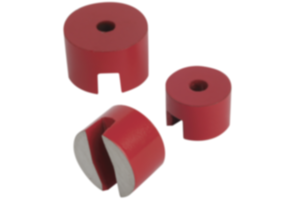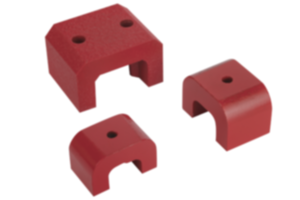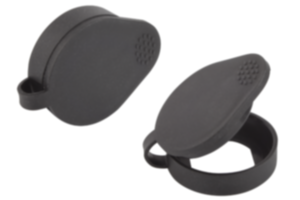Grease nipples by KIPP
Grease nipples are small but crucial components for machine maintenance. They can be found in a wide range of applications in the most various areas, from vehicle manufacturing to industrial production and energy generation. Grease nipples are found almost everywhere.
What is a grease nipple?
The importance of grease nipples in machine maintenance
What kinds of grease nipples are there?
Grease nipples and their lubrication techniques
Advantages of targeted lubrication
Selection and installation of grease nipples
Installing grease nipples
Maintenance and care of grease nipples
When to use lubricating oil and when to use grease?
How to prevent blockages?
Grease nipples by KIPP - A good choice!
What is a grease nipple?
A grease nipple is a small, often overlooked part that plays an important role in mechanical systems of machines. Their task is to supply lubricants, such as greases or lubricating oils, to lubrication points.
Lubrication points can differ depending on the application. In the industry, grease nipples lubricate moving parts such as bearings, gears or joints. The steering system of vehicles is one component that is lubricated.
Lubrication minimises friction and so wear on the individual components is reduced. This leads to substantial cost savings and reduced downtimes.
The importance of grease nipples in machine maintenance
Grease nipples are indispensable small parts when it comes to maintaining machines and systems. They enable targeted lubrication of moving parts. Grease nipples play a crucial role in machine maintenance.
They keep machines and systems running, reduce downtimes and significantly extend the service life of equipment. The seemingly simple task of delivering lubricants to the correct points has an enormous impact on the efficiency and cost-effectiveness of machines and systems in numerous industries. Grease nipples should therefore never be underestimated in machine maintenance!
Types of grease nipples
There are various types and styles of grease nipples, which can differ depending on the application. Choosing the appropriate grease nipple depends on specific requirements. Some grease nipples are better suited to certain applications than others, so proper selection is crucial.
 Button head grease nipples
Button head grease nipples
Button head grease nipples are available in steel or 1.4305 stainless steel. They are especially suitable for lubrication points that require a large volume of lubricant. Their design guarantees a high lubricant flow. The robust design makes button head grease nipples ideal for use on machines that are exposed to heavy external loads.
Conical head grease nipples
Conical head grease nipples from the KIPP range are available in five different styles. All five styles comply with DIN 71412. Conical grease nipples have a tapered thread and are particularly suitable for points that need to be lubricated regularly and reliably. Their versatility make them one of the most frequently used grease nipples.
- Form Astraight
- Form Bangled at 45°, hex collar
- Form Cangled at 90°, hex collar
- Form D, angled at 45°, square body
- Form E, angled at 90°, square body
Protective caps can be used to protect the head of conical grease nipples. Protective caps in different colours can be used to identify the different conical grease nipple lubricating points. For protective caps see here.
Flush-type grease nipples
Flush-type grease nipples are ideal for flush or recessed installation. The funnel-shaped design enables lubricants to be applied effectively even in hard-to-reach places. The KIPP range includes three versions of flush type grease nipples. All three types comply with DIN 3405.
Grease nipple assortment box
Do you need a large selection of grease nipples? No problem. With the assortment box by KIPP you have various grease nipples in different shapes and with various thread sizes at hand.
The assortment box contains conical grease nipples acc. to DIN 71412 in the following forms:
Form A, straight
25 pcs. M6x1
25 pcs. M8x1
15 pcs. M10x1
15 pcs. G1/8''
Form B, angled at 45°
10 pcs. M6x1
10 pcs. M8x1
5 pcs. M10x1
5 pcs. G1/8''
Form C, angled at 90°
10 pcs. M6x1
10 pcs. M8x1
5 pcs. M10x1
5 pcs. G1/8''
Grease nipples and lubricating techniques
Lubrication by grease nipples is a proven method for extending the service life of machines.
Automated lubrication systems use grease nipples to automatically supply lubricants to the lubrication points. These systems are programmed to perform regular or on-demand lubrication. This minimises manual interaction and ensures constant lubrication.
Another lubrication technique is oil lubrication. Lubricating oil is applied using grease nipples. This is particularly common in applications with high speeds and temperatures, such as bearings and drives.
In addition to oil lubrication, there is also grease lubrication. This is done by applying grease through grease nipples. Greases adhere well to the lubrication points and provide long-lasting lubrication.
Besides the techniques mentioned there are many more lubrication techniques. The choice of suitable lubrication methods and appropriate grease nipple depends on the specific requirements of your machines and systems. The selection and implementation of lubrication technology is crucial to ensure effective and reliable lubrication and to extend the service life of your equipment.
Advantages of targeted lubrication
The advantages of targeted lubrication are manifold. Targeted lubrication ensures that lubricants are only applied where they are needed. This reduces the amount of lubricant used and minimises waste. Less lubricants used leads to lower maintenance costs. Because fewer refills and less frequent maintenance is required.
Lubrication is more effective,because the lubricant is applied directly to the lubricating point. This leads to reduction of friction and improves overall efficiency of the machine.
Targeted lubrication not only improves overall efficiency, it also reduces wear on moving partssuch as bearings and joints. This leads to a longer service life of components and the entire machine.
Selection and installation of grease nipples
The correct selection and installation of grease nipples is crucial for their effectiveness. Factors such as size, material and usage should be taken into account when making a selection. Proper installation ensures smooth lubrication and prevents leaks or blockages.
What you should look out for when selecting grease nipples
The following should be taken into account when choosing the appropriate grease nipple:
- Make sure that the grease nipple matches thread size and type of lubrication point.
- Check the working pressure that grease nipples have to withstand.
- The material of the grease nipple can vary depending on environment and application. Ensure that the material is corrosion-resistant where required and suitable for the application environment.
- Consider which type of lubrication is used in your application. Some grease nipples are specially developed for use with grease, while others are more suitable for oils.
- Check whether the grease nipple fulfils quality certificates or standards. Certified grease nipples ensure greater reliability and quality.
Steps for proper grease nipple installation
Installing a grease nipple is a fairly simple task, but requires care and precision.
You will need the following materials and tools for installation:
- Grease nipples
- Spanner or screwdriver
- Grease or oil depending on the application
- A cloth or brush for cleaning
- If required, a seal
Before starting, ensure that the machine or equipment on which you are installing the grease nipple is clean. To prevent impurities from getting into the lubricant, remove any dirt or deposits from the lubrication point.
Now screw the appropriate grease nipple into the thread of the lubrication point by hand. Use a spanner or a screwdriver to tighten it firmly. To avoid damage, take care not to overtighten the grease nipple.
Once the grease nipple is installed, you can inject the appropriate lubricant through the grease nipple. This is normally done using a grease gun. Important - pay attention to the amount of lubricant recommended by the manufacturer.
After you have attached the hose to the grease nipple, actuate the grease gun to pump the lubricant into the lubrication point. There should be noticeable resistance when the lubricant reaches the lubrication point.
The last step is to check for any leaks. If you find any, check that the grease nipple is correctly fitted and tightened. If necessary, use sealing material to repair any leaks.
After installation, maintenance is very important to extend the service life of the grease nipple. Ideally, draw up a comprehensive maintenance plan.
Maintenance and care of grease nipples
Regular maintenance and care is required to ensure that grease nipples work reliably. This includes the correct use of lubricants such as greases or oils. We provide you here with valuable tips on maintenance and show you how to effectively prevent blockages.
Tips for the correct maintenance and care of grease nipples
- Draw up a maintenance plan for the care of the grease nipples
- Grease nipples should be close to a heat source before cleaning
- Use a grease gun to squeeze out old grease (after it has been heated and diluted)
- Clean the grease nipple before lubricating
How to prevent grease nipple blockages?
Before the question can be answered, it should be clear how grease nipples can become blocked in the first place.
The most common causes of blocked grease nipples are grease segregation and contamination of the grease nipples.
Grease segregation is usually caused by poor quality grease, lack of regular lubrication, incorrect grease or equipment that has not been used for a long time.
The environment can contribute to grease nipple contamination. However, contamination can easily be remedied by maintaining the lubrication system.
To prevent the grease nipple from clogging, the grease nipples should be cleaned before lubricating. Cleaning prevents impurities from being pressed into the object being lubricated. Furthermore, attention should be paid to how grease nipples are stored. Ensure that grease nipples are protected from water or dust.
Drawing up a maintenance schedule for lubrication can also prevent the grease nipples from clogging.
Grease nipples by KIPP - A good choice!
We offer high-quality grease nipples that meet the highest standards. Discover the advantages of grease nipples by KIPP and rely on quality and reliability.



















